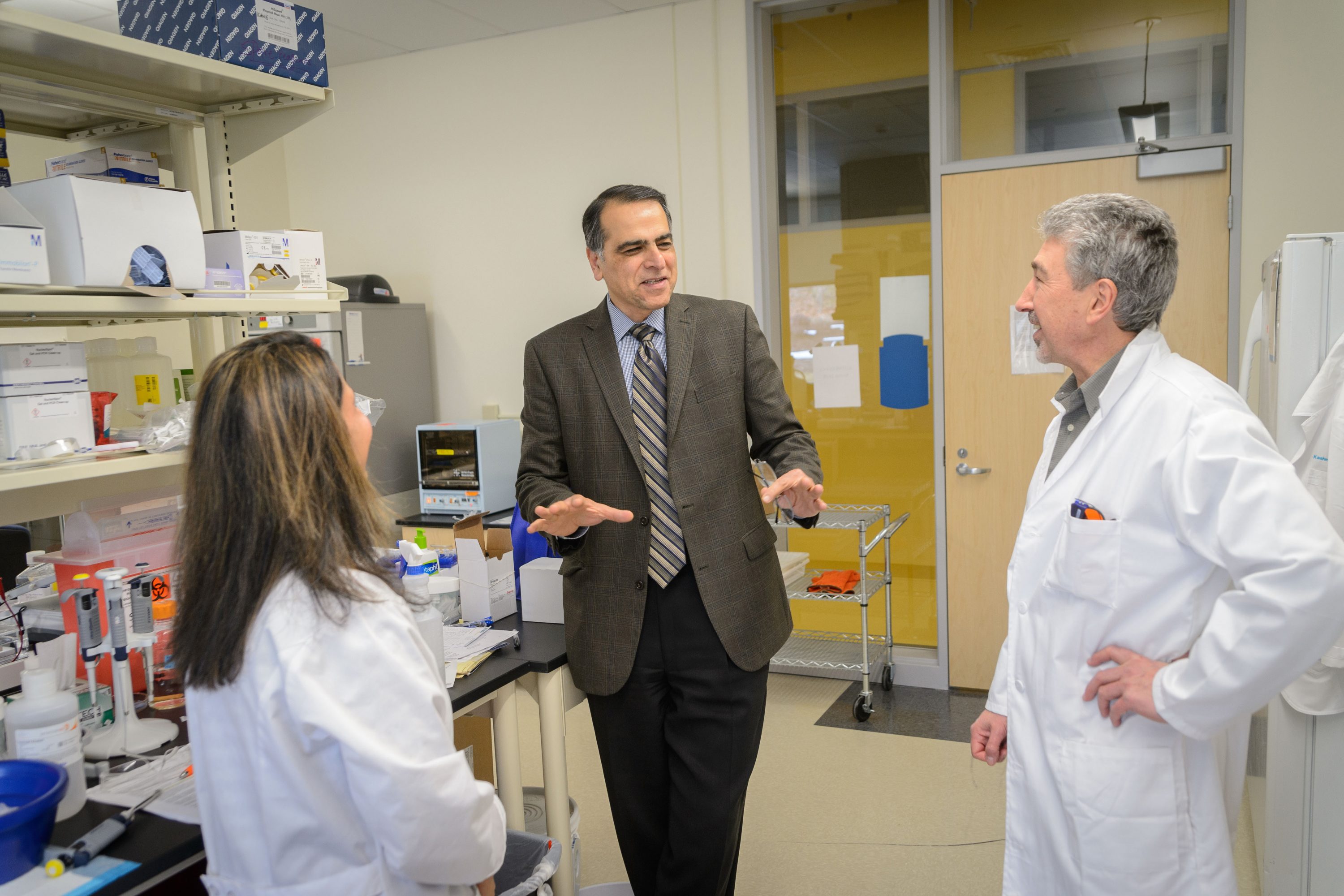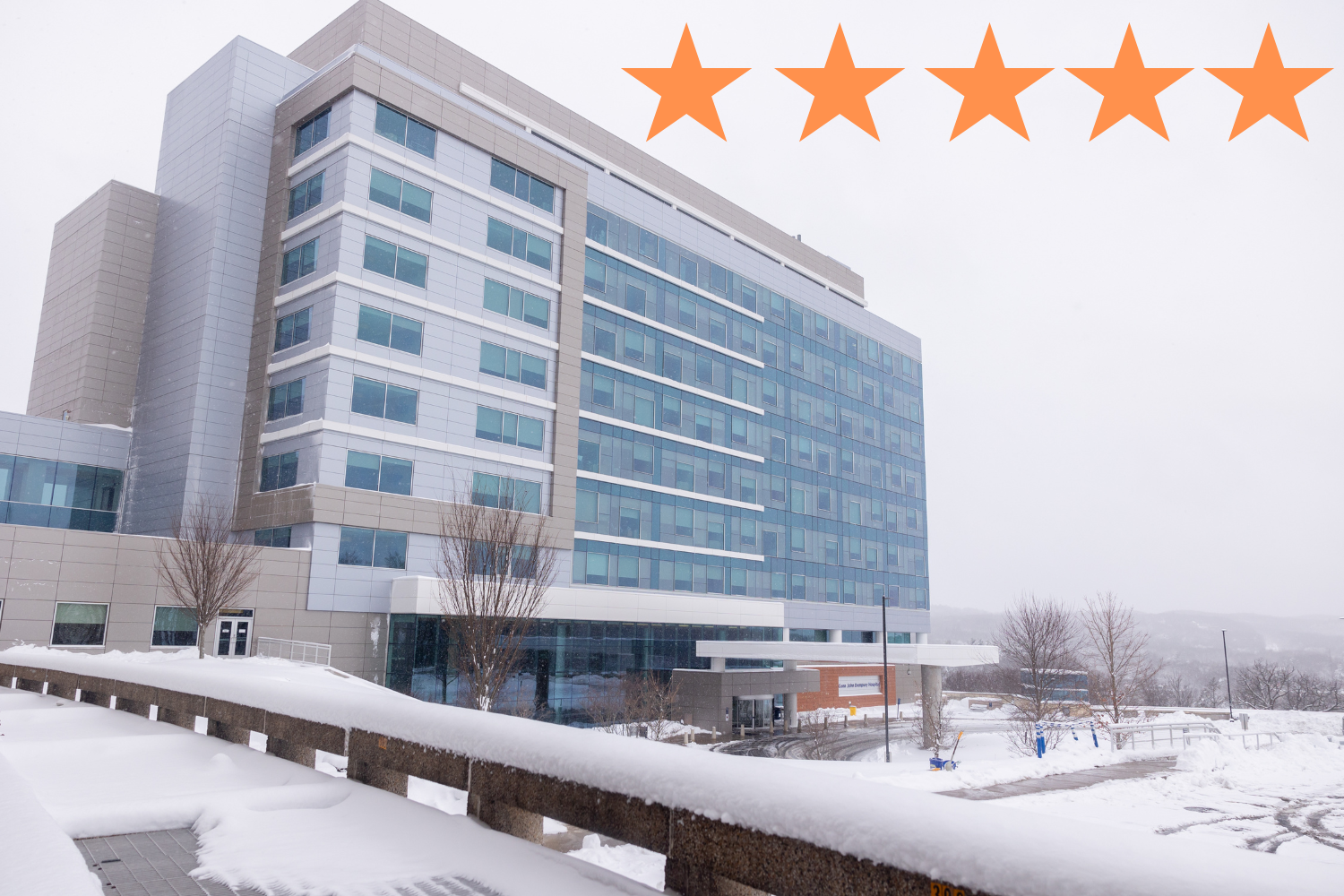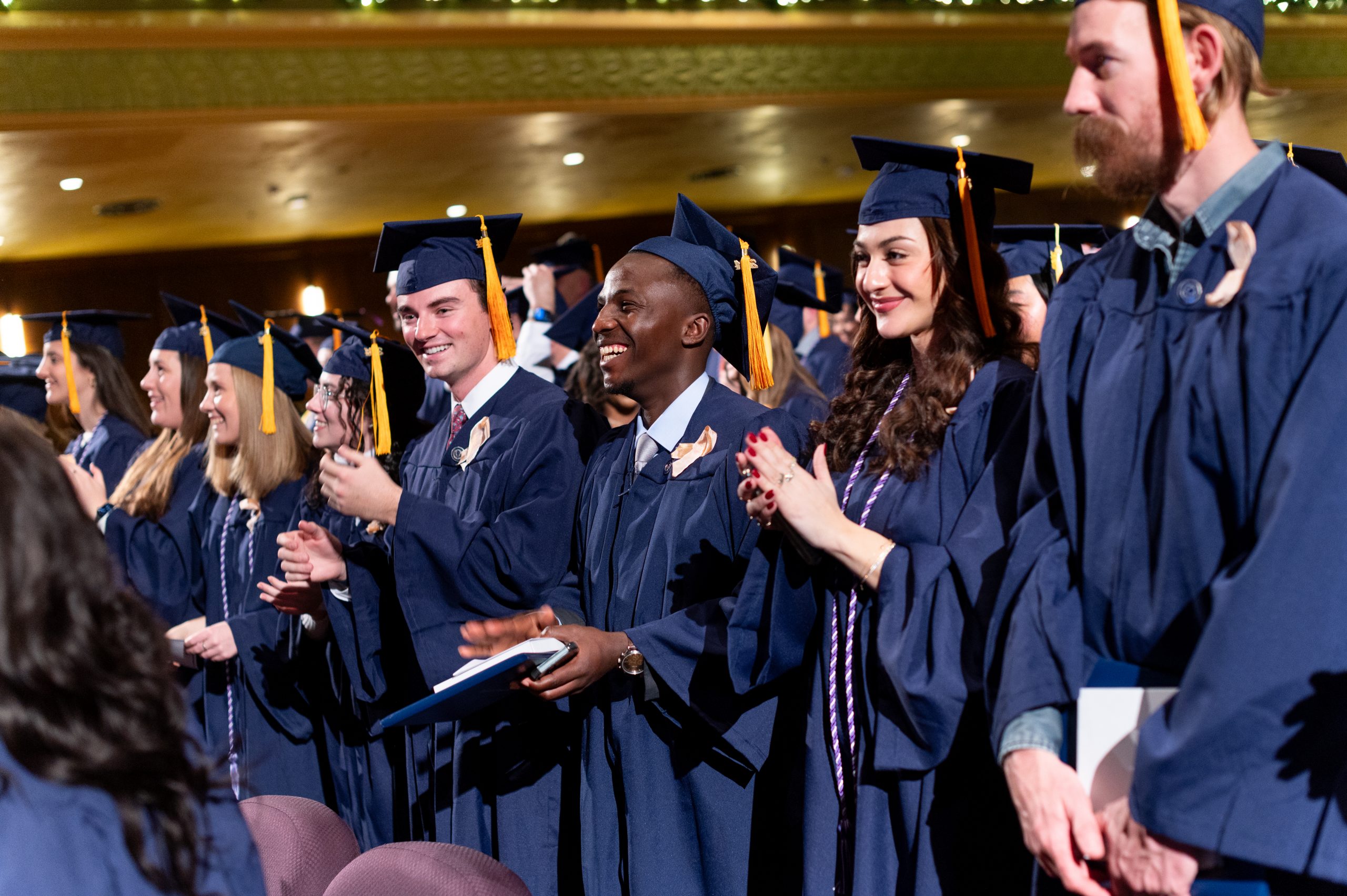This piece was originally published on February 27, 2019 by Innovation Destination: Hartford. To view the original story, visit the Innovation Destination: Hartford website.
Mostafa Analoui, Executive Director of Venture Development at the University of Connecticut, spoke to MetroHartford Alliance Content Manager Nan Price about what brought him to Connecticut, his role at UConn, and his involvement with the UConn Technology Incubation Program (TIP).
NAN PRICE: Give us a little background. What drew you to Connecticut and how did you become involved with UConn?
MOSTAFA ANALOUI: I was a tenured associate professor at Indiana University School of Dentistry & Medicine and the School of Engineering at Purdue University in the mid-1990s to 2001.
I had been tinkering with a few ideas that eventually led to the formation of a startup. That was my hands-on way of learning about innovation and entrepreneurship.
Through my research, I worked with some medical device and pharmaceutical companies, including Pfizer, which approached me and invited me to join the company in their in clinical development department in Groton. That’s how I got to Connecticut in November 2001.
As my job evolved, I began working with leading-edge internal and external innovators, as well as global companies, and I learned how to identify and invest in innovative technologies.
With UConn being so close to Groton, the School of Engineering and the School of Pharmacy approached Pfizer several times to seek a relationship. One professor was looking for a summer internship for one of his PhD students, who I took on and mentored. His interests were close to mine. In the three months he was with us, his work led to a patent application and a major publication, which was quite interesting. So, that was my first connection to UConn.
When I left Pfizer in 2008, I moved to New York City, where I became the head of investment banking for Livingston Securities, a boutique investment bank. At the same time, the Schools of Engineering and Business at UConn approached me to help design and teach a course focused on Biomedical Entrepreneurship. I joined UConn in 2012 as an Adjunct Professor, and the Biomedical Entrepreneurship course I helped develop has been offered since then. Different versions of that course are also currently being offered at Northeastern and Brown Universities.
NAN: That was quite a switch.
MOSTAFA: It was quite a switch from starting my career as a full-time scientist and professor in Indiana to working in an investment bank in New York. The entire time, I had maintained my academic connections and continued supervising my Ph.D. students. But it was challenging to fly to Indianapolis on a regular basis. Thus, my active academic relationship shifted to nearby universities, such as Columbia, Massachusetts Institute of Technology, Harvard, Northeastern, Brown, and UConn.
Through this academic relationship and my engagement in the startup/investment community it became evident that there is a need for hands-on courses to give our graduate students a feel for what happens to academic research on the way to becoming a successful product.
That was the core idea behind the Biomedical Entrepreneurship course, which was intended for graduate students from the Schools of Engineering, Medicine, Dental Medicine, Nursing, and Business. This course eventually expanded to include co-directors from the Schools of Business, Medicine, and Engineering. I’m pleased to see that some of the students took their ideas beyond the class and formed three new startups last year alone.
NAN: Tell us how your connection with UConn evolved.
MOSTOFA: I was still with Livingston Securities when, in 2016, UConn created a venture development position, the focus being identifying business opportunities, creating ventures, populating them with the right management team, and helping them get the investment they need.
When they offered me the position, it was a very challenging decision for me to come from an investment banking background to academia. At the end of a lengthy selection process, I wanted to meet with three individuals on campus to help finalize my decision: The Vice President for Research at the time, the Provost and Executive Vice President for Academic Affairs, and the University President. I was surprised and amazed that everyone was on the same page with their missions and goals. And I was convinced it was the right move. Everyone was committed. This commitment continues to grow today, especially within UConn’s Office of the Vice President for Research, which is headed by Dr. Radenka Maric.
That’s what brought me to UConn in October of 2016, when this new Executive Director of Venture Development role was created. In January 2017, the former Director of the Technology Incubation Program (TIP) retired and I was asked to take responsibility for the TIP as well.
The two roles are interrelated and complementary, but not the same. Now that I’m responsible for both, we have removed a lot of barriers in between. I was lucky that solid groundwork had been laid by previous TIP leadership.
Bear in mind that, as a result of venture development, a company could be created at UConn. But that doesn’t mean the company is required to come to the TIP. The company could locate anywhere. Also, the companies we create as part of my venture development role are based on UConn intellectual property. But in TIP, we often have companies coming from outside of UConn. That’s why the roles are complementary, not identical.
NAN: Let’s talk about the ways the TIP is contributing to economic development in the region.
MOSTAFA: First and foremost, the TIP serves as a hub for entrepreneurial activity that bolsters promising businesses, attracts them to or keeps them in the state, and fuels potential economic growth.
A program within UConn’s Office of the Vice President for Research, the TIP also connects entrepreneurs with internationally recognized faculty experts in a variety of fields and provides access to the research infrastructure and specialized equipment that can only be found at a top research institution like UConn. Add to this the customized business support services and a pool of talented graduates who can become future employees, and you can see how invaluable the TIP’s offerings would be for a startup getting off the ground.
Beyond these qualitative benefits, we focus on a few key metrics to attempt to measure the value and impact the TIP brings to UConn, as well as the state of Connecticut.
One metric is the amount of employment created. In 2018, the combination of full-time and part-time employment totaled 193. And these are high-quality, high-paying jobs with high-tech and biotech opportunities.
The second metric is how much money is coming to this ecosystem. This isn’t money from UConn’s budget or the state of Connecticut, it’s money TIP companies raise from venture capital firms, receive in national grants, or create as revenue. And 2018 was a record year—TIP companies raised $114 million from a combination of all these resources. In 2017, TIP companies raised $60 million, which had broken previous records. Overall, based on those metrics, we see a very strong upward trend.
One area where we don’t anticipate seeing significant growth is the number of companies in the program, because we’re limited with space. And there’s not much vacancy, because as soon as space opens, another company is ready to come in. When we reached 98% occupancy last year, we reshuffled the space to accommodate more companies and ensure that the non-performers make room for other ventures faster.
While we’re committed to supporting all our companies, our model prioritizes high-performing startups that meet milestones or are agile enough to find new strategies to be successful. And ultimately, we are an early step for these startups. Our goal is to help them grow and succeed so they can graduate to permanent locations within three to five years. This makes room for the next wave of high-potential companies to join the TIP.
I was very pleased when I read some reports that referred to the TIP as a success story for developing incubators in other Connecticut towns. Others are looking to the TIP as a model to establish similar programs in their areas.
NAN: The companies working out of the TIP aren’t just technology, biotech, or biomedical, right?
MOSTAFA: That’s correct. We aren’t restricted to one sector, although biotech is one of the strong sectors we have here. Our portfolio reflects the multidisciplinary research being conducted at UConn. For the future, we envision diversifying the portfolio. There’s so much innovation happening in our ecosystem outside of engineering and biotech and we want to support that, too.
We’re also actively seeking high-quality external companies to come to our ecosystem, which add value and interact with UConn researchers. Also, the ability of external companies to attract a broader range of investors creates more exposure for our homegrown UConn startups as well.
I want to note that the TIP has two locations, one in Farmington and the other in Storrs. We are also in the early stages of planning for a presence in Stamford, where we will expand this type of programming in the sectors that are stronger in that area, like software, FinTech, and digital media.
NAN: In what ways is the TIP engaging with the entrepreneurial ecosystem in Connecticut?
MOSTAFA: In addition to space that you see in the incubator, we host a number of educational and networking events that are open for everyone in Connecticut—sometimes people from Western Massachusetts and even New York City have attended our events. Often, we bring larger corporations, big investors, and well-established innovators from within and outside of Connecticut to our ecosystem.
Also, we heavily emphasize collaborating with other universities. We’ve developed a program with funding from CTNext in collaboration with Wesleyan University, Quinnipiac University, The Jackson Laboratory, and Unilever that creates compact, hands-on, invitation-only educational modules for busy, top-notch researchers. The idea is to highlight what’s needed for them to transform their concepts into a product. They’re not becoming entrepreneurs overnight, but at least they can learn to understand the process. Plus, our team is available to help them move in that direction.
So, going beyond UConn, we established a lot of collaborations. And we do have other activities that support statewide innovation and entrepreneurship initiatives, including relationships with a broad range of institutional investors, incubators, and universities with strong programs.
NAN: In terms of economic development, entrepreneurship, and innovation, where do you see the future for Connecticut?
MOSTAFA: Despite some of the economic/policy challenges we see in Connecticut, I’m very positive and even optimistic about the future. What we’re doing here at UConn and the Technology Incubation Program is just a small piece of the puzzle, and when collective work by all in Connecticut comes together, we’ll eventually see the fruits of our labor from within the state. Our work at the TIP can be replicated and enhanced in other places, which will have major impact in the future of Connecticut.
Read about startups participating in the TIP:
- Azitra Inc. – Serial Entrepreneur Helps Build Scientific Startups
- LambdaVision Inc. – Biotech Startup Develops Innovative, Protein-Based Retinal Implant
- Mobile Sense Technologies – Innovative Biotech Startup Develops Wearable Monitoring System
- Shoreline Biome — Biotech Startup Develops Innovative Sequencing Technique
- Torigen – CT Biotech Startup Creates Veterinary Cancer Treatment



